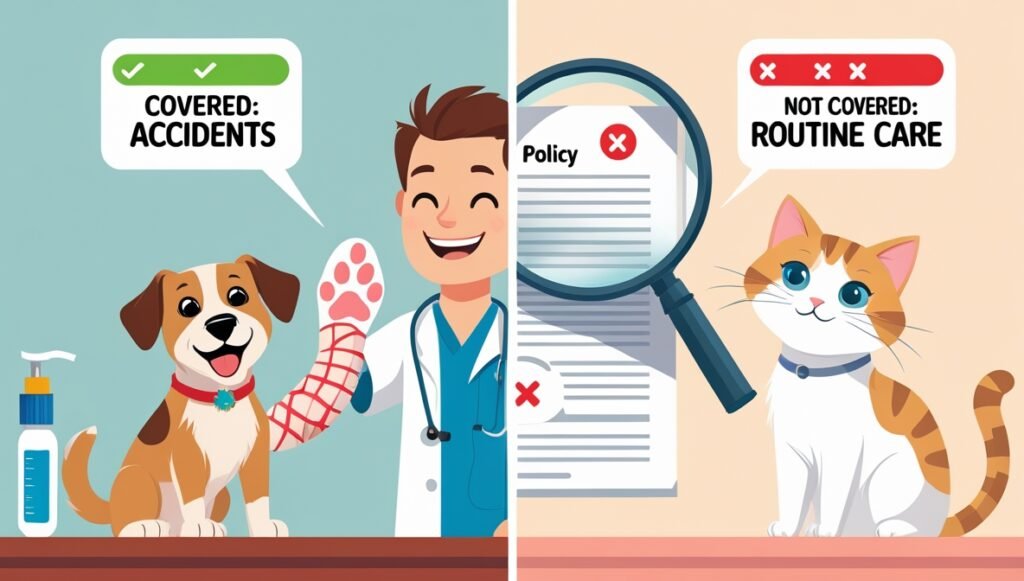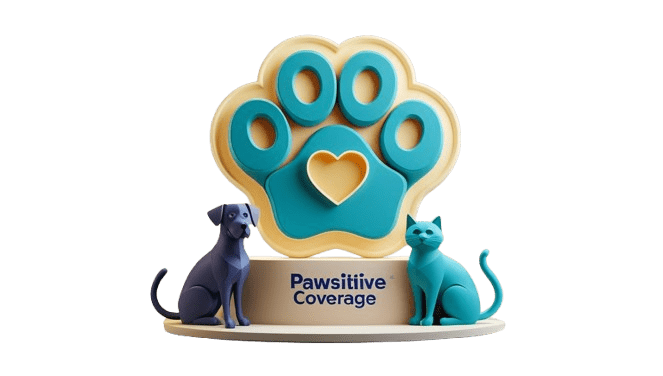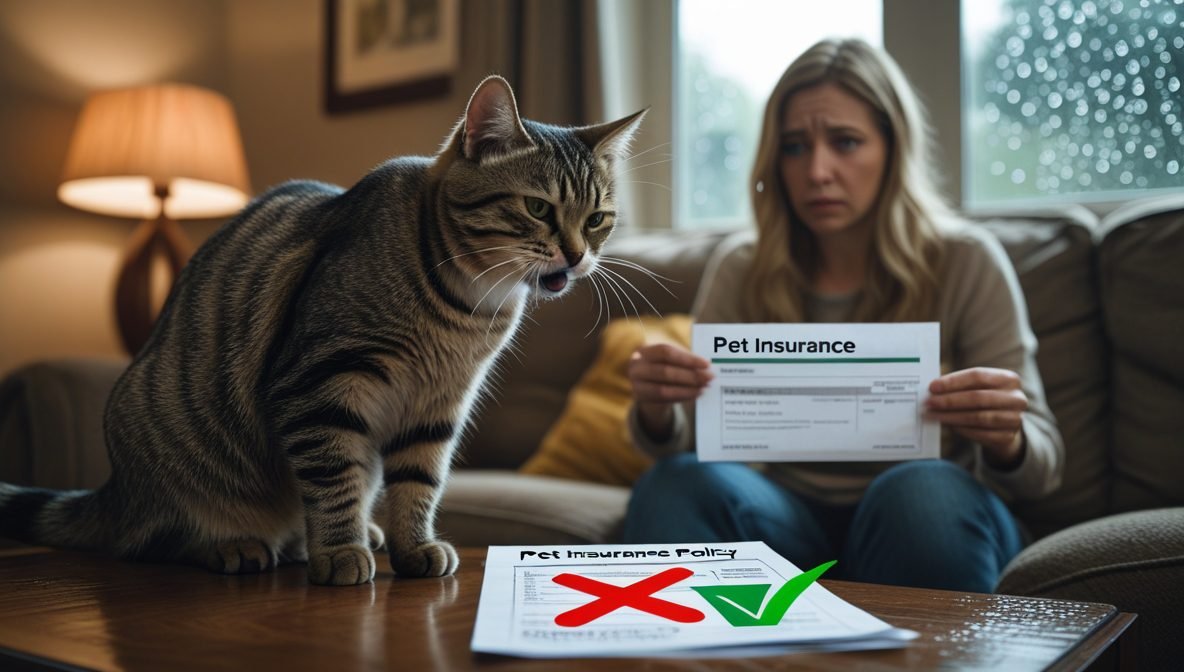Let me set the scene: It’s a rainy Saturday, and I’m sipping tea on the couch while my tabby, Muffin, bats at a feather toy. She’s mid-pounce when she lets out a weird little cough—not her usual hairball hack, but something that makes my stomach twist. A vet visit later, I’m looking at a $1,200 bill for tests and meds. Thank goodness I had pet insurance—but here’s the thing: it didn’t cover everything. Turns out, Muffin’s cough was tied to a pre-existing condition, and I was out of luck for that chunk of the bill. That’s when I realized understanding pet insurance coverage isn’t just helpful—it’s a must.
If you’ve ever wondered what pet insurance for dogs or cats actually covers (and what it doesn’t), you’re in the right spot. We’re diving into the nitty-gritty—what’s included, what’s left out, and how to avoid surprises when your furry pal needs care. Whether it’s your pup’s wild antics or your kitty’s sneaky health quirks, let’s unpack this so you can keep them purring or wagging without the financial freakout.
What’s Usually Covered: The Good Stuff
Pet insurance is like a cozy blanket for your pet’s health—it’s there to wrap them up when things go sideways. But what exactly does it cover? Let’s break it down with the stuff that’s typically included, so you know what to expect when your dog or cat needs a vet.
- Accidents: Think of the chaos-makers—like when your dog, let’s call him Buddy, decides a sock is a gourmet snack and needs surgery to get it out. Or maybe your cat, Luna, takes a tumble off the windowsill and sprains a paw. Most plans cover these oopsies, from X-rays to stitches.
- Illnesses: This is the big one for sneaky health issues. Ear infections, tummy troubles, or even heavier stuff like diabetes or cancer treatments—Muffin’s tests for her cough would’ve been covered if it wasn’t pre-existing. If Buddy catches kennel cough at the dog park, this usually steps in.
- Hereditary and Congenital Conditions: Some plans go the extra mile for breed-specific quirks. Say Buddy’s a Labrador with a family history of hip dysplasia, or Luna’s a Persian prone to kidney issues. If your plan includes this, you’re golden for those genetic curveballs.
- Diagnostics and Treatments: Bloodwork, ultrasounds, meds—most plans cover the detective work and fixes. When Muffin needed antibiotics for a urinary infection last year, my insurance kicked in for the meds and the vet’s sleuthing.
- Wellness Add-Ons (Sometimes): Not all plans include this, but some let you tack on routine care—like vaccines, flea meds, or teeth cleanings. It’s like a bonus round for keeping Buddy’s chompers shiny.
Here’s a real-life moment: My neighbor, Jen, has a beagle named Daisy who ate a chunk of chocolate. The $2,000 emergency vet bill for stomach pumping and fluids? Her insurance covered 80% because it was an accident. That’s the kind of safety net we’re talking about.
What’s Not Covered: The Fine Print You Can’t Ignore
Now, let’s flip the script—because pet insurance isn’t a magic wand. There are things it won’t touch, and knowing these exclusions can save you from a nasty surprise. I learned this the hard way with Muffin, and I don’t want you to get caught off guard.
- Pre-Existing Conditions: This is the biggie. If Buddy had a limp before you signed up, or Luna’s been sneezing since last summer, most plans will say, “Nope, not our problem.” Muffin’s cough? It started months before I got insurance, so I was on my own for that part of her care.
- Routine and Preventive Care (Unless Added): Without a wellness add-on, don’t expect coverage for Buddy’s annual shots or Luna’s flea treatments. Spaying or neutering? Usually a no-go unless your plan says otherwise.

- Cosmetic Procedures: Ear cropping, tail docking, or declawing—most insurers won’t touch these. If you’re thinking of a nose job for Luna to make her Instagram-ready, you’re footing the bill.
- Behavioral Issues: If Buddy’s chewing the furniture or Luna’s stress-scratching the couch, training or meds for those quirks are often excluded. My friend Sam tried to claim anxiety meds for his anxious pup, Pickles, and got a big fat zero.
- Dental Care (Sometimes): Some plans skip dental unless it’s tied to an injury or illness—like if Buddy cracks a tooth on a bone. Routine cleanings? Usually not covered unless you’ve got that wellness perk.
I’ll never forget Sam’s face when he realized Pickles’ $800 dental cleaning wasn’t covered—he thought “comprehensive” meant everything. It’s a bummer, but knowing what’s off the table helps you plan ahead.
The Gray Areas: Where It Gets Tricky
Some stuff falls into a murky middle ground—it might be covered, but it depends on the plan. This is where you’ve got to play detective and ask questions before you sign on the dotted line.
- Chronic Conditions: If Luna develops asthma after you enroll, most plans will cover it. But if it’s been a thing for years, it’s pre-existing—sorry, no dice. Check how your insurer defines “chronic” versus “cured.”
- Alternative Therapies: Acupuncture, physical therapy, or hydrotherapy for Buddy’s sore joints? Some plans are cool with it, others aren’t. My cousin’s dog, Tinker, got hydrotherapy for arthritis, and her plan covered it—but she had to fight for it.
- End-of-Life Care: Euthanasia or cremation might be covered if it’s tied to a covered condition, but not always. It’s a tough topic, but worth asking about.
- Age Limits: Some plans cap coverage as pets get older. If Luna’s pushing 12, her meds might get pricier—or excluded—depending on the policy.
When I was shopping for Muffin’s plan, I called the insurer and grilled them about her potential asthma risks. They were upfront about what they’d cover, which saved me a headache later. Don’t be shy—ask the hard questions.
How to Make Sure You’re Covered When It Counts
So, how do you avoid getting stuck with a bill you thought was covered? It’s all about being proactive. First, read the policy like it’s a mystery novel—every clue matters. Look for terms like “exclusions,” “waiting periods,” and “caps.” Waiting periods are sneaky—some plans make you wait 14 days for illnesses, so if Buddy gets sick right after you sign up, you’re on your own.
Next, keep records. When Muffin had her first cough, I didn’t think much of it—until it bit me later as a pre-existing condition. Vet notes, dates, even photos—document everything. It can help prove a condition isn’t pre-existing if it pops up later.
And don’t be afraid to shop around. If one plan skips dental but another includes it, that might be the tiebreaker for Buddy’s toothy grin. Compare at least three providers—check reviews, call their support, and see who feels right. Jen swears by her plan because they covered Daisy’s chocolate mishap, but Sam’s still grumbling about Pickles’ exclusions.
A Little Tale to Tie It Up
Here’s a story to bring it home: Last winter, my coworker’s pup, Sky, a bouncy husky, ate a Christmas ornament. The $3,000 surgery to fix her up? Covered, because it was an accident. But Sky’s ongoing allergy meds? Not a dime, since they started before the policy. Knowing what was in and out saved my coworker from a bigger meltdown—she budgeted for the meds and let insurance handle the big stuff.
Wrapping It Up
Understanding pet insurance coverage for your dog or cat is like knowing the rules of a board game—you can’t win if you don’t know what’s on the table. We’ve walked through what’s included (accidents, illnesses, and more), what’s not (pre-existing stuff, routine care), and the gray areas to watch. Now you’re armed to pick a plan that fits without leaving you high and dry.
Want to dig deeper? Check out our for more tips. Got a story about a coverage win—or a miss that taught you something? Drop it in the comments—I’d love to hear your pet tales!

